The Festival of (In)appropriation #8
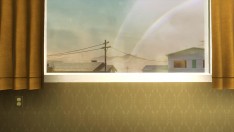
The Plastic Garden by Ip Yuk Yiu
Sunday February 21, 2016, 7:30 pm
Los Angeles Filmforum presents
The Festival of (In)appropriation #8
At the Spielberg Theatre at the Egyptian, 6712 Hollywood Blvd., Los Angeles CA 90028
Curators Jaimie Baron and Greg Cohen in person!
Whether you call it collage, compilation, found footage, détournement, or recycled cinema, the incorporation of already existing media into new artworks is a practice that generates novel juxtapositions and new meanings and ideas, often in ways entirely unrelated to the intentions of the original makers. Such new works are, in other words, “inappropriate.” This act of (in)appropriation may even produce revelations about the relationship between past and present, here and there, intention and subversion, artist and critic, not to mention the "producer" and "consumer" of visual culture itself. Fortunately for our purposes, the past decade has witnessed the emergence of a wealth of new audiovisual elements available for appropriation into new works. In addition to official state and commercial archives, resources like vernacular collections, home movie repositories, and digital archives now also provide fascinating material to repurpose in ways that lend it new meaning and resonance.
Founded in 2009 and curated by Jaimie Baron, Lauren Berliner, and Greg Cohen, the Festival of (In)appropriation is a yearly showcase of contemporary, short (20 minutes or less), audiovisual works that appropriate existing film, video, or other media and repurpose it in “inappropriate” and inventive ways. From Afro-Futurist fantasias and forensic historical revisions of the McCarthy hearings to South Pole conquests and love letters to Britney Spears, this eighth edition of the Festival promises an astonishing kaleidoscope of aesthetic methods, philosophical positions, and political impulses. Brace yourselves for a sophisticated testament to the enduring power and vast potential of appropriation cinema in the new millennium!
Read this review of last year’s Festival of (In)appropriation in Artillery magazine: http://artillerymag.com/festival-inappropriation-7/
Check out this interview by Laura Wissot with curators Jaimie Baron and Greg Cohen in Filmmaker magazine: http://filmmakermagazine.com/84086-the-festival-of-inappropriation-6-at-los-angeles-filmforum/ - .Uv6Qlf0dq89
Tickets: $10 general admission; $6 students (with ID)/seniors; free for Filmforum members.
Tickets available at http://www.brownpapertickets.com/event/2492916 or at the door
For more event information: www.lafilmforum.org, or 323-377-7238
Jaimie Baron is an Assistant Professor of Film Studies at the University of Alberta. Her work on film and media theory, experimental film and video, documentary, appropriation, and digital media has been published in numerous journals and anthologies. Her first book The Archive Effect: Found Footage and the Audiovisual Experience of History was published by Routledge Press in 2014. She is also the founder, director, and co-curator of the Festival of (In)appropriation.
Lauren S. Berliner is an Assistant Professor of Media and Communication and Cultural Studies at University of Washington Bothell. Her research focuses on amateur media production practices, gender and sexuality, and pedagogy. Also a filmmaker, she has screened her work internationally and facilitates video production programming for girls and queer youth. She earned her PhD. in Communication from UC San Diego, an MA in Visual and Media Art from Emerson College, and a BA in English and Anthropology from Wesleyan University.
Greg Cohen, an artist and scholar of cinema and visual culture, joined the Festival of (In)appropriation in 2012. His research and practice range across domains, from landscape theory and aesthetic philosophy to experimental archives and the intersection of art and politics. His experimental video and photographic work has been exhibited locally and internationally, and his multi-media visual research project, The Valaco Archive, continues to evolve at http://valacoarchive.com. Cohen currently lectures on Latin American film and visual culture in UCLA’s Department of Spanish & Portuguese.
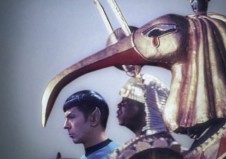
Astro Black: We are the Robots, by Soda_Jerk
Astro Black: We are the Robots, by Soda_Jerk
(Australia, digital video, color, sound, 2010, 6:35)
The Festival of (In)appropriation is pleased to return to the provocative Afrofuturist musings of Astro Black, the on-going video cycle by Australian duo Soda_Jerk. In episode 2, We are the Robots, the artists sound the impact of German electronic music on Afrofuturist sonic culture, by re-imagining the iconic scene in Close Encounters of the Third Kind in which scientists communicate with an alien mothership via keyboard synthesizer. In Soda_Jerk's speculative revision, Kraftwerk play sequences from their own music and the mothership responds with fragments of tracks that have sampled Kraftwerk. As with all the episodes of Astro Black, cosmic jazz man Sun Ra also makes the scene in We are the Robots (joined this time by the likes of David Bowie, Dr. Spock, Dr. No, and Lieutenant Ohuru). The whole jam points towards a transnational conception of cultural production that unsettles our linear conceptions of time.
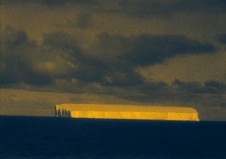
Landscape with Broken Dog, by Orazio Leogrande
Landscape with Broken Dog, by Orazio Leogrande
(Argentina, digital video, black & white and color, 2014, 14:00)
Buenos Aires-based Italian writer and filmmaker Orazio Leogrande describes his film, Landscape with Broken Dog (Paisaje con perro roto), as “a requiem for a cinema that has been dismembered” and “the story of a journey to the impossible.” It is also a cogent reflection on the common historical, technological, and ideological origins of arctic exploration, modern medicine, and the medium of cinema itself. Combining its mesmerizing original score with an incisive, heterogeneous selection of found footage culled from film archives around the world, Leogrande’s work plumbs the darkest regions of a shared, often illusionary (if not delusional), positivist-imperialist dream, one that has generated so many ill-fated voyages of discovery and gruesome medical experiments, not to mention a vital archive of cinematic imagery with which to visualize and rationalize it all.
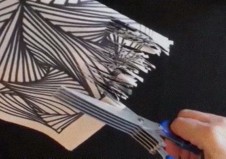
Let Me ASMR You by Clint Enns
Let Me ASMR You by Clint Enns
(Canada, digital video, color, sound, 2014, 2:40)
Autonomous Sensory Meridian Response (ASMR) is a perceptual phenomenon characterized by a tingling sensation in the head, scalp, back, or peripheral regions of the body in response to visual, auditory, or other stimuli. While there is no scientific evidence explaining ASMR, many people have reported experiencing these sensations, and many videos have been produced and posted on YouTube intended to induce an ASMR response. In this film, Enns appropriates some of these ASMR videos to create a piece of visual music, which – at least for some viewers – may have intense effects on the entire body.
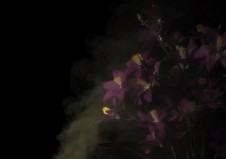
It Takes All Sorts by Rachel Stuckey
It Takes All Sorts by Rachel Stuckey
(US, digital video, color, sound, 2014, 10:30)
In It Takes All Sorts, Rachel Stuckey animates the woods and native flora so that they appear to speak excerpts from a 1970s educational film about hospital labor. In a world seemingly devoid of humans, we are left to consider the management of our biology through the healthcare system. Syncopated rhythm in sound and edit amplify and encourage a reinterpretation of care and its representation through cinema as mechanized, routine, and overproduced.
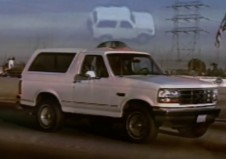
Overpass by Kami Chisholm
Overpass by Kami Chisholm
(Canada, digital video, color, sound, 2014, 4:57)
In Overpass, Kami Chisolm takes us with her onto the LA freeway during the infamous OJ Simpson car chase of 1994. As we follow the pursuit of Simpson’s Bronco through television news footage, Chisolm reflects, in haunting voiceover, on her own position on that same road. Weaving personal memory with the story of Shakespeare’s Othello, she contemplates how each of their directions is informed by legacies of racial and domestic violence. Setting the intimate, interpersonal violence of US American life against racialized celebrity spectacle, Chisolm pursues the connection between the two as the police descend on Simpson.
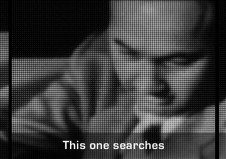
The End of an Error by Peter Freund
The End of an Error by Peter Freund
(US, digital video, black & white, sound, 2013, 10:00)
The 1954 Army-McCarthy Hearings marked the unmistakable beginning of the end of the “Red Scare” period in the United States. Sixty years hence, The End of an Error refashions the archival record to report the demise of the “communist threat” from the vantage point of what has since emerged in the American imagination as the “terrorist state.” Through the complex use of repetition and redundancy (both visual and verbal), Freund’s film underscores the banality and absurdity of McCarthyism and its legacy. By the same token, the narration (in Farsi with English subtitles) relays an intricate and sometimes humorous examination of shifting political phantasms and the status of the image as historical document.
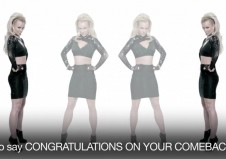
Dear Britney by Duke and Battersby
Dear Britney by Duke and Battersby
(US, digital video, color, sound, 2014, 5:00)
In Dear Britney, we enter the mind of Britney Spears fan Gary through a heartfelt fan letter that scrolls over a remix of her career of music videos. As Gary attempts to illustrate his connection to Britney through their shared experience with mental illness, he poignantly demonstrates the disparity between his lived reality and hers. His words pass ephemerally on the screen as Britney remains a spectacle, disavowing the opportunity for mutual empathy that Gary seeks while creating a cacophony out of his fandom and personal struggle. Inspired by Mike Hoolboom’s music video remake, Dear Madonna (1996).
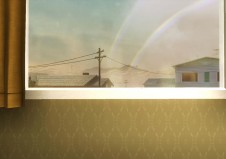
The Plastic Garden by Ip Yuk Yiu
The Plastic Garden by Ip Yuk Yiu
(Hong Kong, digital video, color, sound, 2013, 11:30)
The Plastic Garden restages mid-century fears of nuclear apocalypse with appropriated images from the popular video game Call Of Duty: Black Ops (2010). Dreadfully quiet and serene, the film forces a confrontation between the violence of a forgotten future and our contemporary socio-political reality.
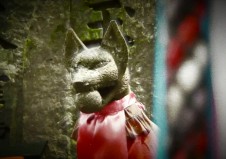
Soft Pong Inari, by Michael Lyons & Palle Dahlstedt
Soft Pong Inari, by Michael Lyons & Palle Dahlstedt
(Japan/Sweden, digital video, color, sound, 2014, 2:06)
A visual experiment in crowd-sourcing, Soft Pong Inari was made entirely from pre-existing photographs of Fushimi Inari Shrine (in Kyoto, Japan) available for modified re-use in the creative commons. Michael Lyons’s pulsating, recombined swarm of still images exploits the reiteration of motifs and colors across an array of anonymous sources, while Swedish composer Palle Dahlstedt’s original score—part Buddhist dirge, part minimalist electronic landscape—provides a counterpoint in slowness and simplicity to the frenetic visual track. What emerges, pradoxically, is a concrete, overarching sense of place, even as we find it impossible to fix any single image with our gaze.
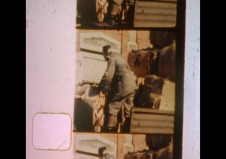
Notes For A Polish Jew by Abraham Ravett
Notes For A Polish Jew by Abraham Ravett
(US, 16mm & 8mm on digital video, color, silent, 2012, 8:05)
Filmmaker Abraham Ravett was born in Poland but left as a very small child. When a colleague traveled to Lodz, Poland in the 1980s, Ravett asked him to shoot a roll of double-8 film of the city. Ravett then reworked this footage, collaging directly onto the filmstrip and optically printing his transformations. In the resulting film, Notes for a Polish Jew, Ravett envisions his father – who last saw his family in Lodz in 1944 and who passed away in 1979 at the age of 74 – visiting the city again. Imagining how his father might have filmed his return to Lodz, Ravett considers his own family history in relation to notions of Polishness, Jewishness, and their potentially fraught intersection.
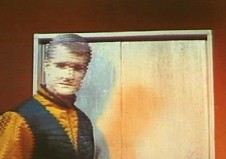
Send Me a Copy by Albert Alcoz
Send Me a Copy by Albert Alcoz
(Spain, digital video, color, sound, 2011, 5:24)
Send Me A Copy appropriates footage from the 1967 science fiction film A Journey To The Center Of Time, in which time-traveling scientists become lost in time. When they finally return to their temporal home, they find copies of themselves in their place. Interlacing video is a technique for doubling the amount of perceived video information without consuming extra bandwidth. The interlaced signal contains two fields of a video frame – each consisting of every other horizontal line – captured at two different times, which alternate so quickly that the viewer does not miss any information. However, when interlaced video is transferred from one format to another, the interlacing may become visible so that the two fields interfere with one another. Like the time-traveling scientists in A Journey to the Center of Time, the image becomes out of synch with itself. In Send Me A Copy, footage from the film is transformed through its interlaced images, gesturing towards the way in which video remains a form of science fiction.
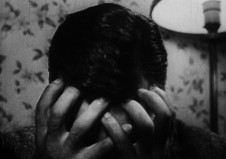
In Light, In! by Ken Paul Rosenthal
In Light, In! by Ken Paul Rosenthal
(US, 16mm on digital video, black & white, sound, 2013, 12:00)
Masterfully re-mixing recycled 16mm 1950s-era educational films, In Light, In orchestrates a haunting and seductive visual essay in which the attempt to manage emotion is reinterpreted as both a catalyst and mirror for cultural struggle and distress. Accompanied by original musical compositions by cellist Zoe Keating.
